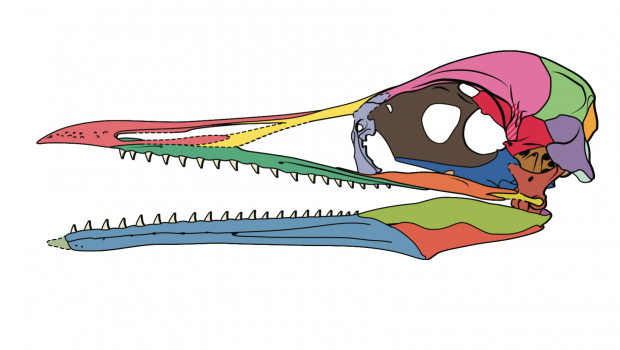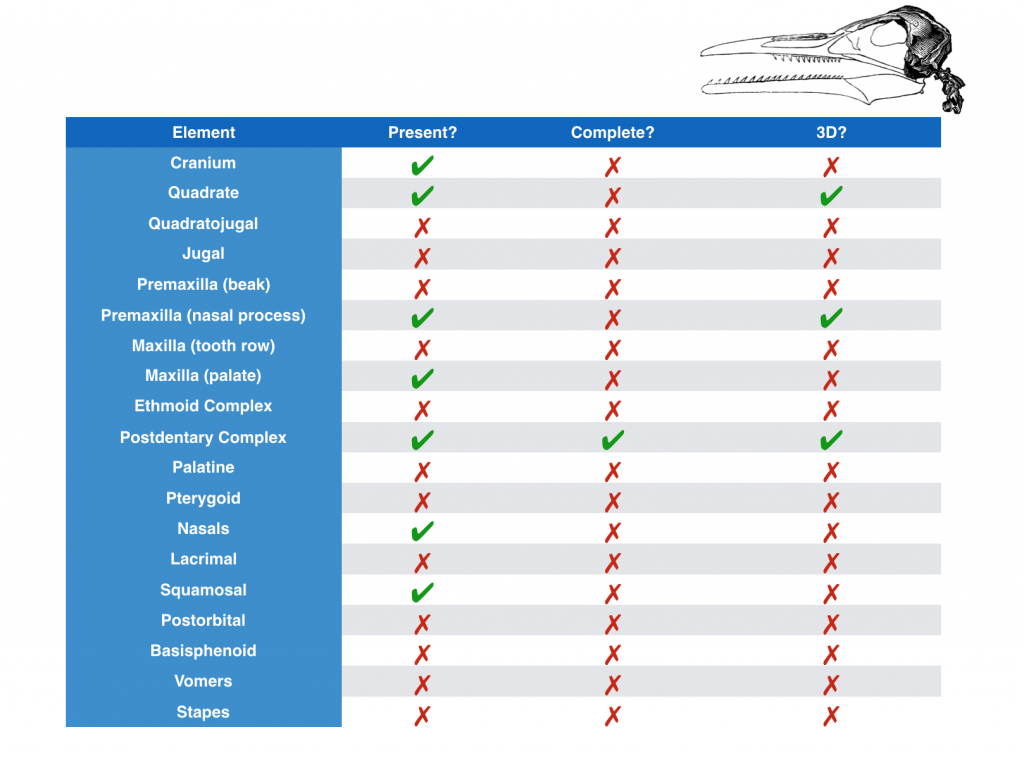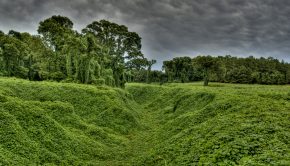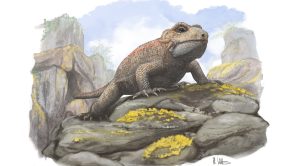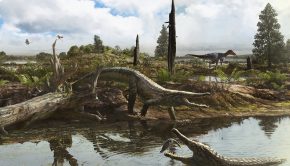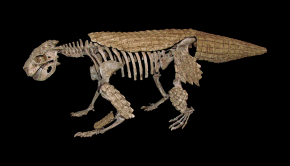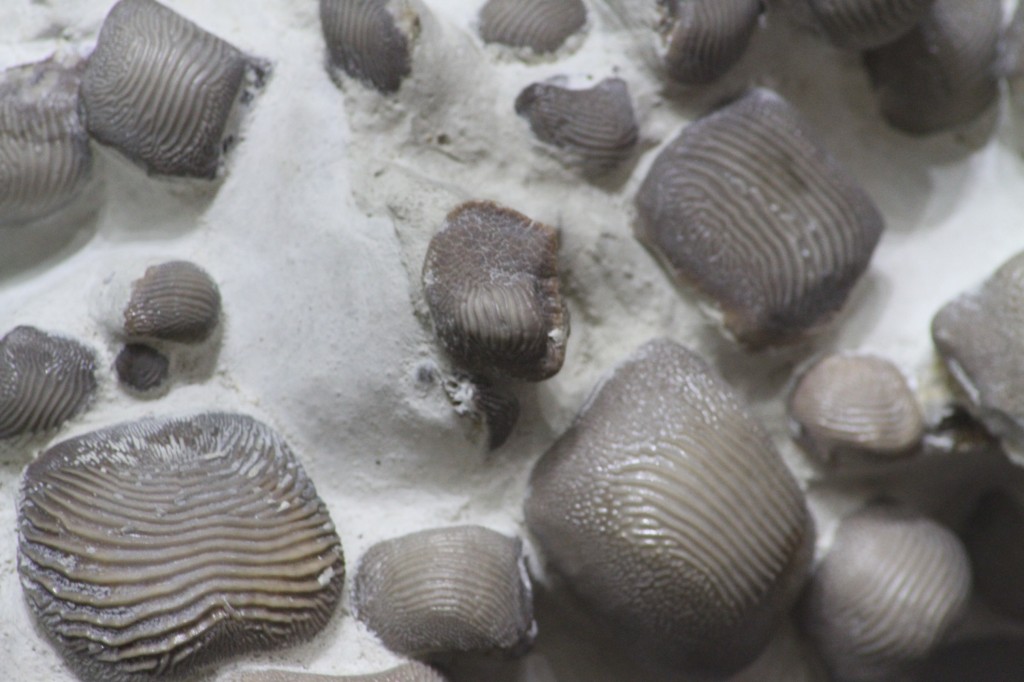Episode 90: Ichthyornis
Bird evolution has long fascinated palaeontologists. Despite crown-group birds (birds giving rise to modern lineages today) evolving during the Cretaceous, there are relatively few fossils from this time, making it difficult to understand this key time period and just exactly how modern birds came to be.
Dr. Daniel Field, 50th Anniversary Prize Fellow from the University of Bath, studies bird evolution, particularly how crown-group birds evolved. In this episode, we discuss his recent paper on an exceptionally preserved Ichthyornis specimen, and it’s significance in understanding how modern birds came to be.
Podcast: Download (Duration: 28:10 — 40.2MB)
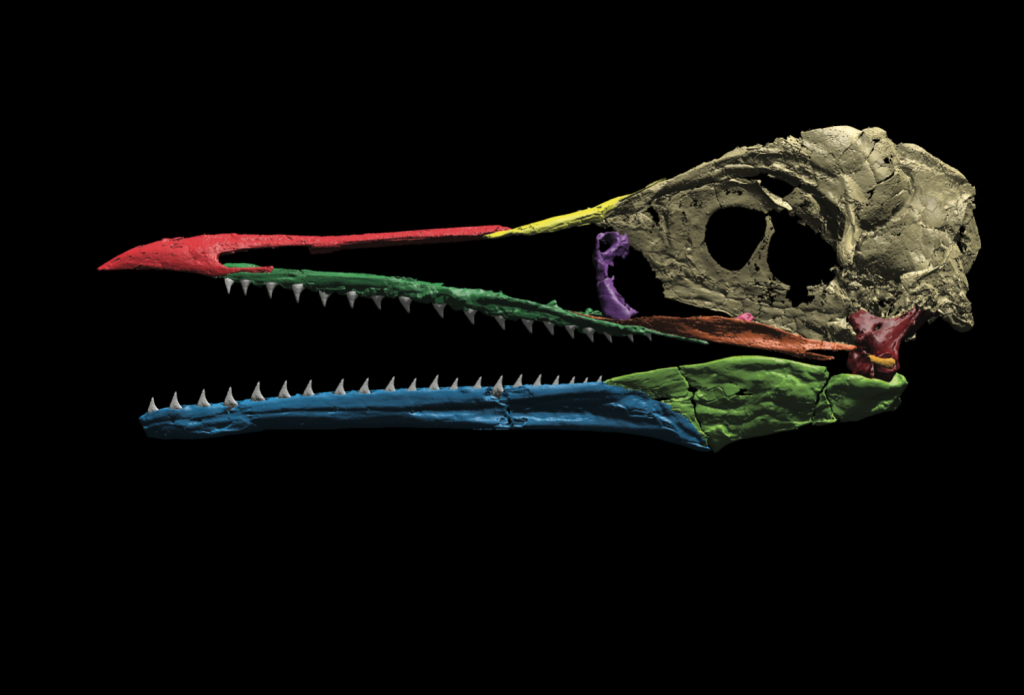
3D reconstruction of the Ichthyornis skull based on high-resolution CT scans, from Field and Hanson et al. (2018).
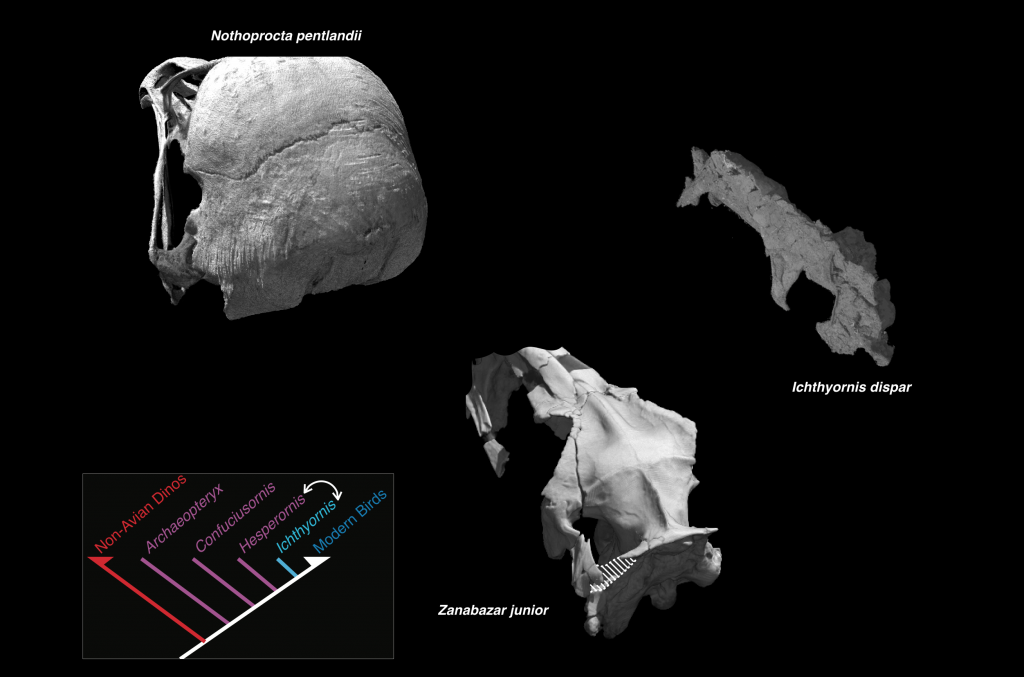
This figure compares the architecture of the upper temporal fenestra of a troodontid theropod dinosaur (Zanabazar), Ichthyornis, and a living bird (Nothoprocta). This region of the skull is rarely preserved in fossil birds. The upper temporal fenestrae of modern birds are greatly reduced in their robustness and dimensions relative to many theropod dinosaurs, but Ichthyornis exhibits a temporal region of the skull that is more similar to deinonychosaurs like Zanabazar than to most modern birds. This raises an interesting question: was a dinosaur-like temporal region retained very late in bird evolutionary history? Copyright Daniel Field.
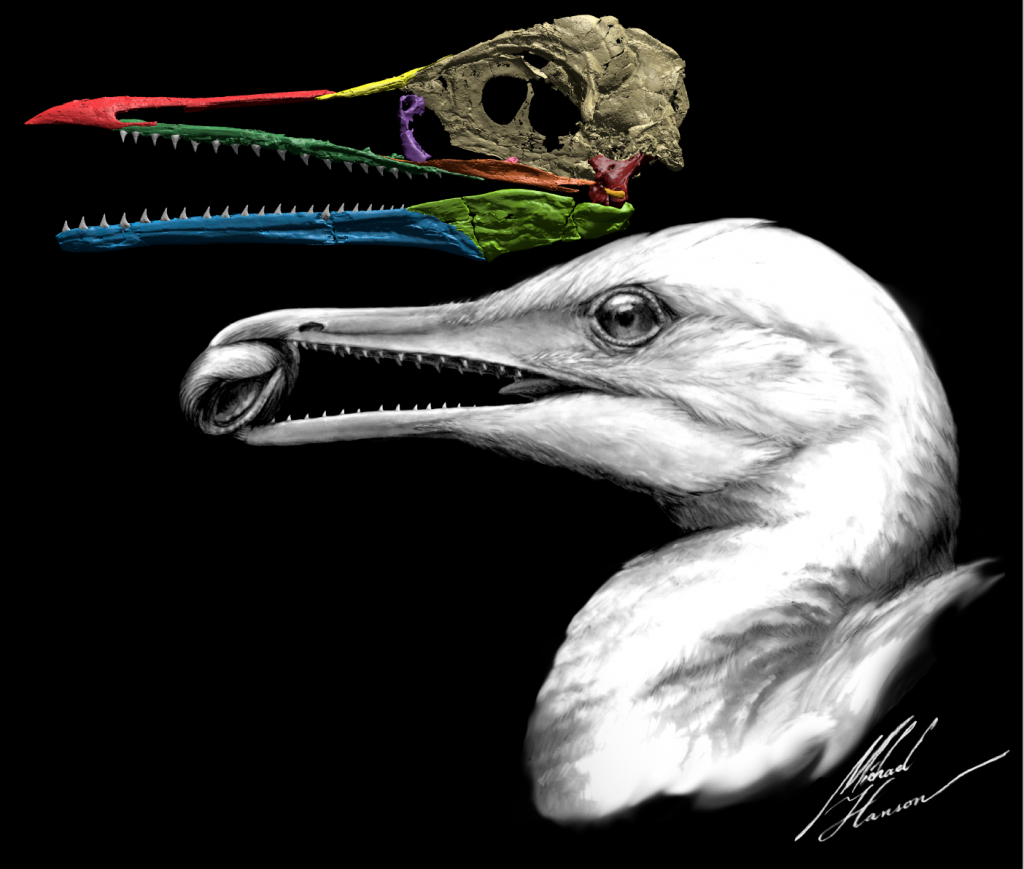
This reconstruction of Ichthyornis, based on our new data, was drawn by study co-author Michael Hanson, a PhD student at Yale.
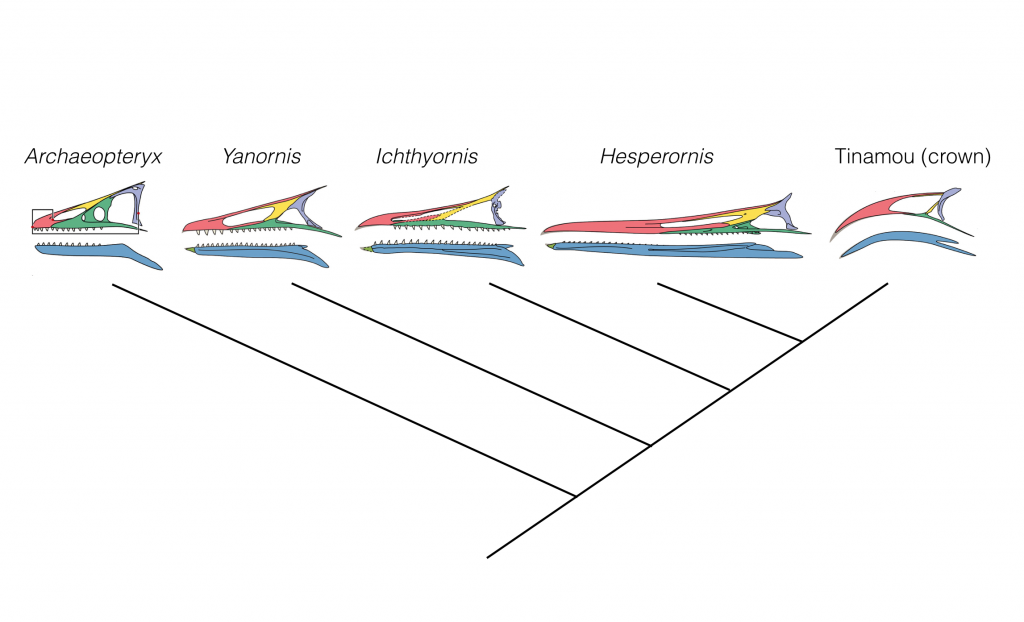
This illustrates evolutionary patterns in bird beak evolution throughout the Mesozoic. Ichthyornis retains very prominent maxillae (green) late in bird evolutionary history; these elements are greatly reduced (and toothless!) in modern birds. The toothless premaxillae (red) of Ichthyornis may represent the earliest known manifestation of a ‘beak’ homologous with that of modern birds (although toothless bills arose independently numerous times throughout dinosaur, and avialan, evolutionary history). Copyright Daniel Field.
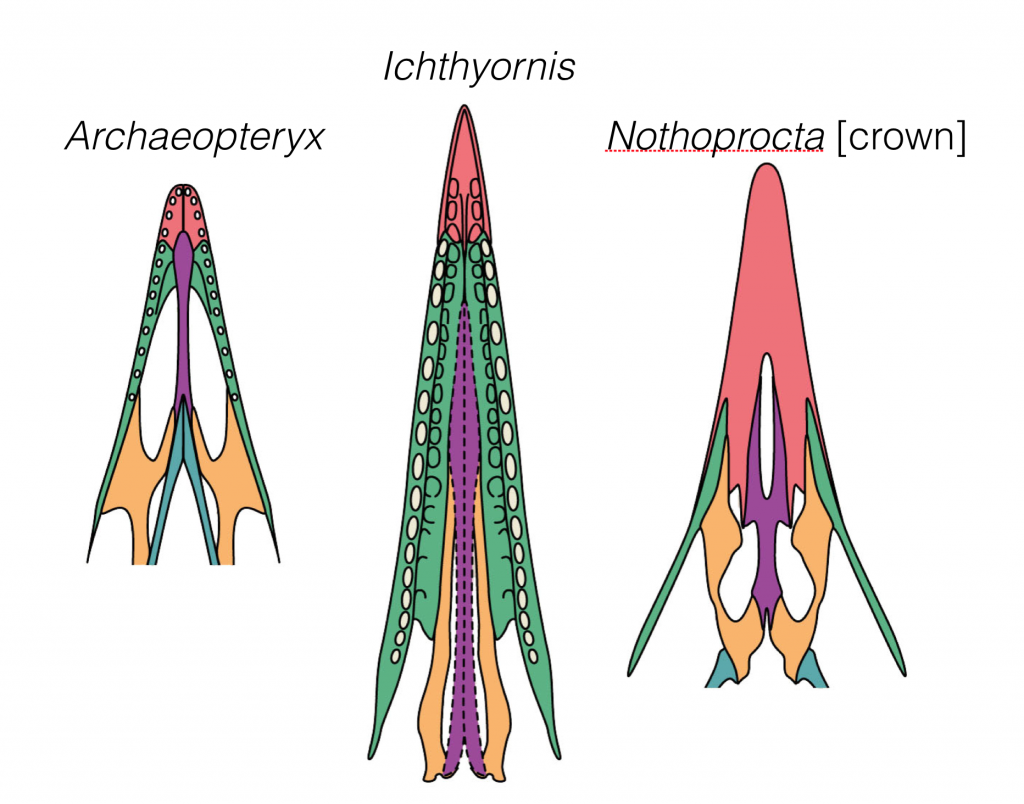
These images of the palate in ventral view illustrate some new anatomical observations on Ichthyornis, in comparison with Archaeopteryx (more distantly related to living birds), and the living tinamou Nothoprocta. The large and extensive maxillae (green) of Ichthyornis are evident, as are the toothless premaxillae (red). The ventral surface of the premaxillae exhibits three prominent holes on each side, which would have accommodated teeth from the lower jaw. Similarly, along almost the entirety of the medial surface of the maxillae (green), lateral to the actual tooth row, holes perforated the palate that would have accommodated lower jaw teeth. Copyright Daniel Field.
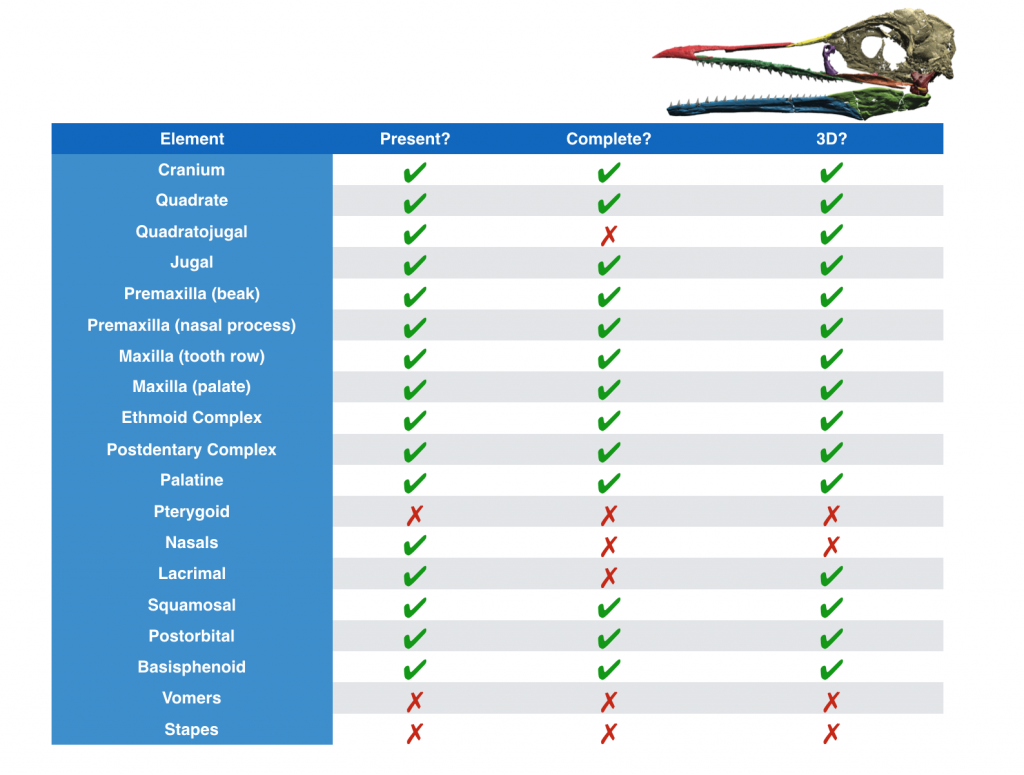
Ichthyornis skull elements now known, with the new material in Field and Hanson et al. (2018), compared with those known previously since its first discovery in 1872 (below). Copyright Daniel Field.
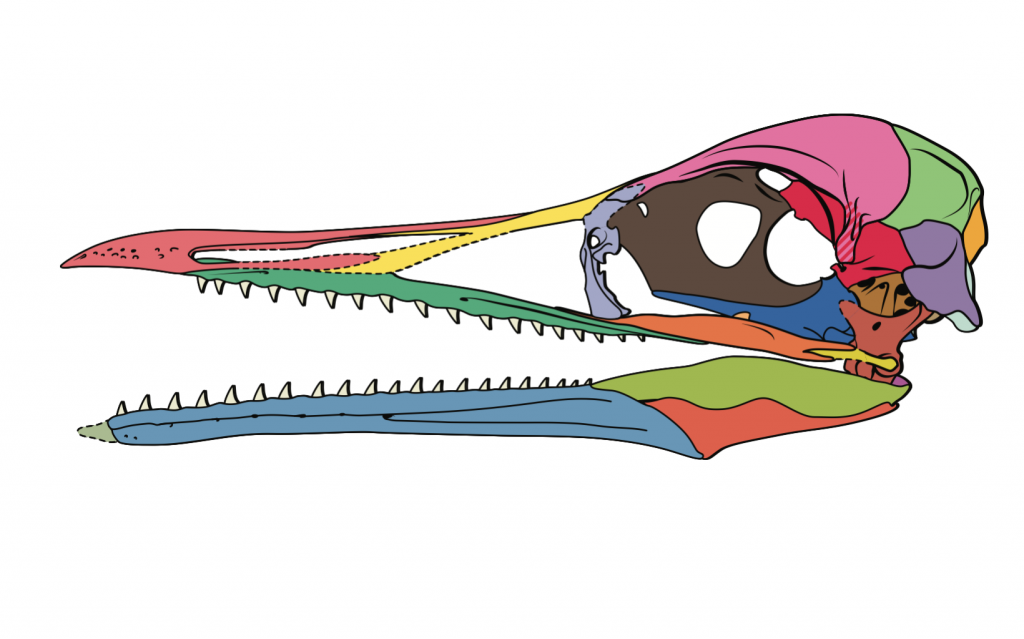
Line drawing of the 3D skull reconstruction of Ichthyornis, from Field and Hanson et al. (2018).

